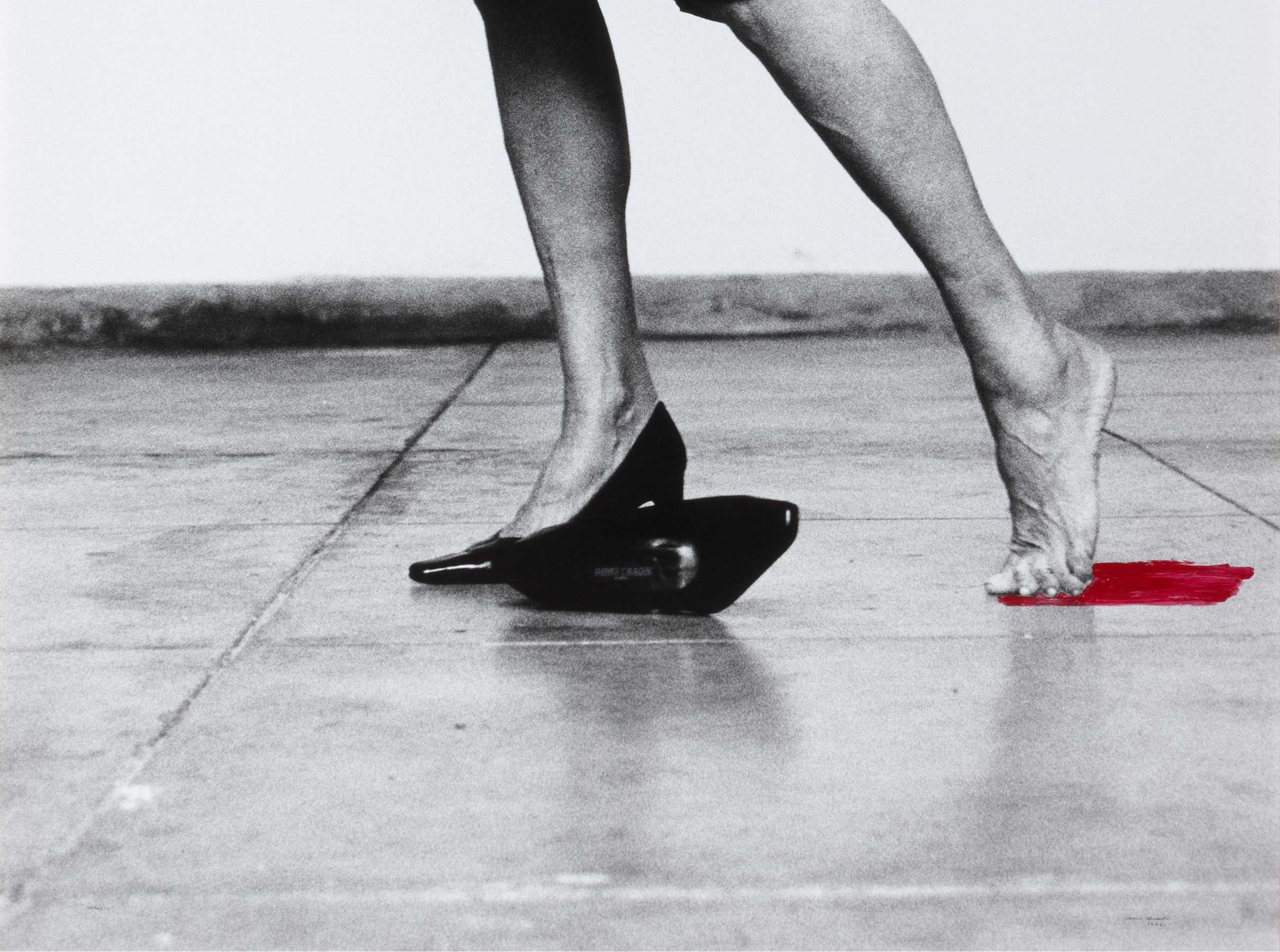Ofrenda de frutas [Offering of Fruit]
- 1994
- Ilfochrome on paper with secondary support of mounting board
- 93,5 x 68 cm
- Edition 1/2
- Cat. F_12
- Acquired in 1995
The Banco de España Collection has three photographs by Basque artist Alberto Peral. Born in Santurce (Vizcaya) in 1966, Peral first appeared on the Spanish cultural scene in the early 1990s. Using a strongly conceptual approach, he has worked in a great variety of disciplines, including drawing, photography, installation and video. However, it is perhaps in the medium of sculpture that he feels most comfortable and in which he has created his best-known works. Peral himself considers that his pieces in other languages ultimately reference sculpture. In an interview with Rodrigo Carreño, he said: 'I am a sculptor, but not so much in the idea of working the material; rather, my head is constantly thinking about the elements. I come from a 1980s object-based tradition of representing things physically. Whenever I have made video or photography it has always been related to that previous three-dimensional experience. That's why I always play with two-dimensionality and three-dimensionality. I have tried other media, but always with a view to experimenting and I end up returning not to the object but to the three-dimensional and the physical'. Alberto Peral is linked to the classical avant-garde in his use of simple geometric forms —ovoids, spheres and cones are all common features— endowed with a warm, organic treatment that appeals to the eye and touch. He thus makes pieces that project anthropomorphic reminiscences and establish a powerful presence in the domain of the real, albeit concealed by the apparent neutrality of the white cube.
This ambiguity prevails in the three photographs from the Banco de España collection, (Offering of Fruit, 1994; Lock 1 and Lock 2, 1999). The first of the three has been selected for its subject matter for the exhibition on still lifes. In this publication, Álvaro de los Ángeles draws a link between Offering of Fruit and Vik Muniz's still life, Fruit Basket (also in the current exhibition) based on the Caravaggesque influences of the two works. To different extents, the two pieces both use photography, as well as classical influences and the symbolic power of the image, to make reference to the baroque still life or naturaleza muerta, of which there were some important examples from the Spanish artistic scene of the seventeenth century.
In this case, the fruit —a bunch of black grapes, pears and apples— is depicted as an offering, handed over by bare male hands. There are strong references to baroque languages in the light and the timing, in which the objects appear suspended and frozen. However, the meaning of the image is very ambiguous. The photograph is taken against a black background and the human being emerges out of a strong chiaroscuro, showing only his hands and a white loincloth covering his abdomen and genitals; these fragments of the body, together with the fruits, whose sense of offering underlines the title of the photograph, are illuminated in a dramatic, very theatrical fashion. Poetics and beauty are used as means of generating emotion in an image whose iconography seems familiar, referencing a rite whose origins go back to the beginning of time, to the primordial moment of culture. Darkness also draws us to the mystery of the ancient sacred spaces, accessible only to the initiated, wherein mysteries took place that linked the contingent with the beginning of everything.
In this offering, the status of the giver is not clear: Is he embracing and protecting the fruits of the earth or is he squeezing them? The fact that it is part of an unidentified human body, whose face has been stolen from us, reifies the figure, generating a continuum with the nature it sustains. In a subtle way, both subject and fruits appear to be delivered, offered.
Other works by Alberto Peral

![Ofrenda de frutas [Offering of Fruit]](/f/webca/INF/assets/img/fff.png)